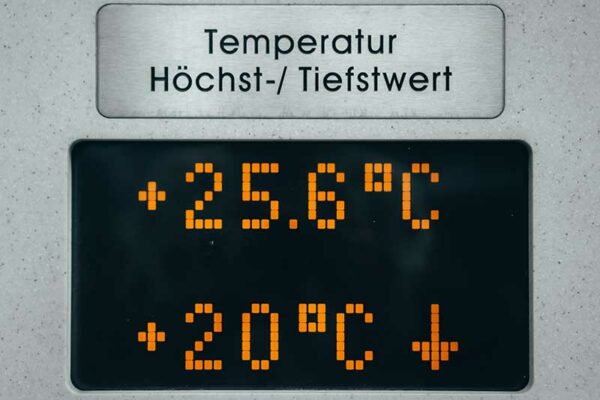The customer service team is always listening, taking notes, and quantifying complaints to ensure our products are continually improved. Due to selling directly to you, the customer, via Amazon, we can use product reviews to help us improve our existing products or help further development of new products.
Table of Contents
On the news, we see the feels like temperature mentioned as something important to our health. This can be the heat index during the summer or the wind chill temperature during the winter. During the summer we might wonder, what is the difference between heat index and feels like temperature, and how does this affect our daily lives.
What is the Feels Like Temperature
There is an important difference between the actual air temperature and the feels like temperature and how it can affect our health. The air temperature is the actual temperature outside. The feels-like temperature is how the wind or the humidity combined with the air temperature actually feels like on our skin and affects our health and how we should dress.
Knowing what the feels like temperature are going to be can mean the difference between life and serious health problems, which is why the news mentions this. Feel like temperatures are so important that during the winter the National Weather Service will issue wind chill advisories and warnings. During the summer they might issue heat index advisories and warnings.
When you look at the temperature on a thermometer, like the ThermoPro Wireless Indoor/Outdoor Thermometer, what you see is the actual air temperature. But if the wind is blowing during the winter, it can feel much colder on your skin. If there is high humidity during the summer, it can feel much hotter to your body. That is the feels like temperature.
What Is the Difference Between Heat Index and Feels Like Temperature
You might have heard the old saying, “it’s not the heat, it’s the humidity.” Actually it’s both. The heat index is also known as the feels like or the apparent temperature. The heat index is a combination of the air temperature and relative humidity.
So what is the difference between heat index and feels like temperature?
There isn’t a difference, they are the same thing. Recently the term feels like the temperature has been used more often than heat index, but they mean the same thing.
Why Knowing the Heat Index Is Important to Our Health
During the summer the heat index and the feels like temperature chart are important for everyone and especially for those that work outdoors, children, and the elderly.
During hot summer days, our body cools us off by causing us to sweat. The sweat then evaporates. This evaporation is the body’s way of taking heat away from our body and cooling us down. Otherwise, we would continue to get hotter and hotter.
What’s more, the high humidity will impact the sweating. When high humidity is combined with hot temperatures, our sweat doesn’t evaporate as readily as it does when the humidity is lower. So our body doesn’t cool as effectively.
A combination of high humidity and hot air temperatures can lead to heatstroke, which is a serious health condition that can lead to death if not dealt with immediately.
An air temperature of 86° F (30° C) with 40% humidity has a feel like temperature of 86° F. But if the humidity was 90%, the feels like temperature to your body would be 105° F (41° C).
Why Knowing the Wind Chill Is Important to Our Health
During the winter, the wind chill and the feels like temperature are used interchangeably and important for us to know. The wind chill is a combination of air temperature and wind speed.
If the air temperature is 0° F (-18° C) with a calm wind, it will feel like 0° F on your skin. But if the wind is blowing at 20 mph, the wind chill or the feels like temperature on your exposed skin will feel like 22° F below zero (-30° C).
The wind chill on your exposed skin can increase your risk of frostbite and hypothermia quickly. At a wind chill or feels like temperature of 22° F below zero, you can get frostbite on exposed skin in less than 30 minutes.
How Is Feels Like Temperature Calculated?
Both the wind chill and heat index feels like temperatures are calculated using several complicated mathematical formulas. The easiest way to calculate your local wind chill or heat index is to go to the National Weather Service page and enter in your local weather conditions and use their online calculators.
To calculate the wind chill, enter your local outdoor temperature and the local wind speed into their wind chill calculator.
Using your own indoor/outdoor thermometer, enter your outside temperature and the outside humidity into their calculator, and it will give you the current heat index at your location.
Using an Indoor/Outdoor Thermometer
You can place the outdoor remote sensor anywhere you like outside within 200 feet (60 meters) of the indoor station. This is an advantage since you can find a spot that is not in direct sunlight, allowing you to get accurate readings.
The remote sensor is sealed in a waterproof and cold-resistant box and uses rechargeable lithium batteries. The indoor unit shows you the temperature in either F or C and can be mounted on a wall or it can sit on a table.
Using an indoor/outdoor thermometer like the ThermoPro Wireless Indoor/Outdoor Thermometer is not only fun but useful. One quick glance at the temperature and humidity will give you an idea of what to expect before you leave the house and how to dress.
On the news, we see the feels like temperature mentioned as something important to our health. This can be the heat index during the summer or the wind chill temperature during the winter. During the summer we might wonder, what is the difference between heat index and feels like temperature, and how does this affect our daily lives.
What is the Feels Like Temperature
There is an important difference between the actual air temperature and the feels like temperature and how it can affect our health. The air temperature is the actual temperature outside. The feels-like temperature is how the wind or the humidity combined with the air temperature actually feels like on our skin and affects our health and how we should dress.
Knowing what the feels like temperature are going to be can mean the difference between life and serious health problems, which is why the news mentions this. Feel like temperatures are so important that during the winter the National Weather Service will issue wind chill advisories and warnings. During the summer they might issue heat index advisories and warnings.
When you look at the temperature on a thermometer, like the ThermoPro Wireless Indoor/Outdoor Thermometer, what you see is the actual air temperature. But if the wind is blowing during the winter, it can feel much colder on your skin. If there is high humidity during the summer, it can feel much hotter to your body. That is the feels like temperature.
What Is the Difference Between Heat Index and Feels Like Temperature
You might have heard the old saying, “it’s not the heat, it’s the humidity.” Actually it’s both. The heat index is also known as the feels like or the apparent temperature. The heat index is a combination of the air temperature and relative humidity.
So what is the difference between heat index and feels like temperature?
There isn’t a difference, they are the same thing. Recently the term feels like the temperature has been used more often than heat index, but they mean the same thing.
Why Knowing the Heat Index Is Important to Our Health
During the summer the heat index and the feels like temperature chart are important for everyone and especially for those that work outdoors, children, and the elderly.
During hot summer days, our body cools us off by causing us to sweat. The sweat then evaporates. This evaporation is the body’s way of taking heat away from our body and cooling us down. Otherwise, we would continue to get hotter and hotter.
What’s more, the high humidity will impact the sweating. When high humidity is combined with hot temperatures, our sweat doesn’t evaporate as readily as it does when the humidity is lower. So our body doesn’t cool as effectively.
A combination of high humidity and hot air temperatures can lead to heatstroke, which is a serious health condition that can lead to death if not dealt with immediately.
An air temperature of 86° F (30° C) with 40% humidity has a feel like temperature of 86° F. But if the humidity was 90%, the feels like temperature to your body would be 105° F (41° C).
Why Knowing the Wind Chill Is Important to Our Health
During the winter, the wind chill and the feels like temperature are used interchangeably and important for us to know. The wind chill is a combination of air temperature and wind speed.
If the air temperature is 0° F (-18° C) with a calm wind, it will feel like 0° F on your skin. But if the wind is blowing at 20 mph, the wind chill or the feels like temperature on your exposed skin will feel like 22° F below zero (-30° C).
The wind chill on your exposed skin can increase your risk of frostbite and hypothermia quickly. At a wind chill or feels like temperature of 22° F below zero, you can get frostbite on exposed skin in less than 30 minutes.
How Is Feels Like Temperature Calculated?
Both the wind chill and heat index feels like temperatures are calculated using several complicated mathematical formulas. The easiest way to calculate your local wind chill or heat index is to go to the National Weather Service page and enter in your local weather conditions and use their online calculators.
To calculate the wind chill, enter your local outdoor temperature and the local wind speed into their wind chill calculator.
Using your own indoor/outdoor thermometer, enter your outside temperature and the outside humidity into their calculator, and it will give you the current heat index at your location.
Using an Indoor/Outdoor Thermometer
You can place the outdoor remote sensor anywhere you like outside within 200 feet (60 meters) of the indoor station. This is an advantage since you can find a spot that is not in direct sunlight, allowing you to get accurate readings.
The remote sensor is sealed in a waterproof and cold-resistant box and uses rechargeable lithium batteries. The indoor unit shows you the temperature in either F or C and can be mounted on a wall or it can sit on a table.
Using an indoor/outdoor thermometer like the ThermoPro Wireless Indoor/Outdoor Thermometer is not only fun but useful. One quick glance at the temperature and humidity will give you an idea of what to expect before you leave the house and how to dress.









